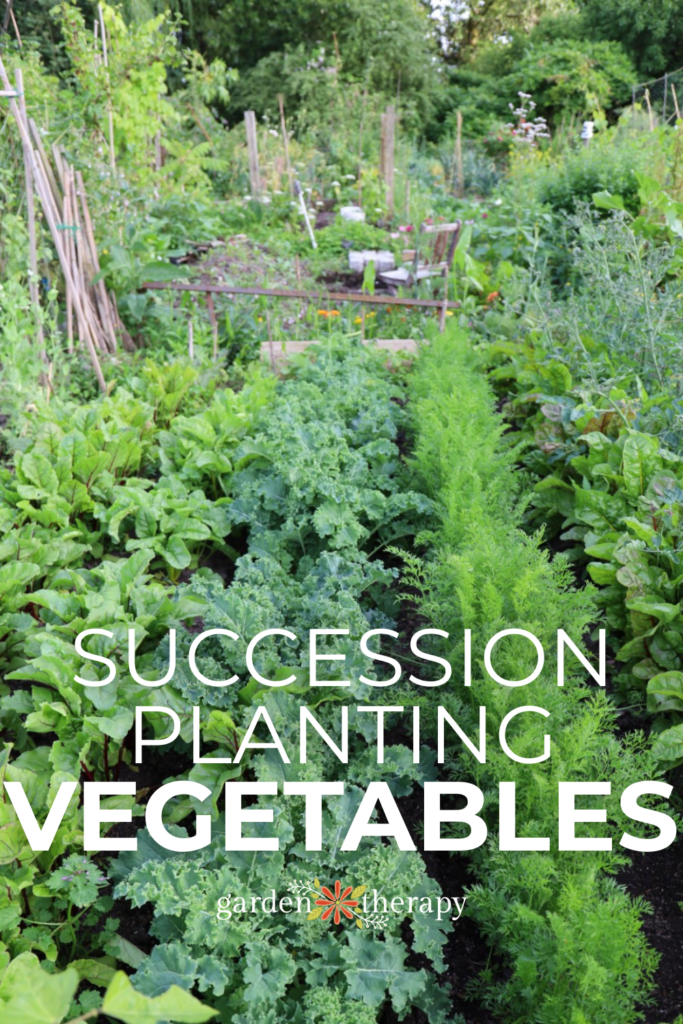True gardeners know that seed starting is a year-round thing. When you implement staggered sowing, you can actually extend your harvest and get more vegetables out of one area. Here’s everything you need to know about succession planting vegetables.

Many think that by the time the end of May and June rolls around, the seed starting time is over. But experienced gardeners know that you can keep sowing seeds nearly all summer long. You can even plant seeds in the fall for those speedy vegetables!
Succession planting is a practice that helps ensure you get a larger, longer harvest. I’ll never forget my neighbours who planted their first vegetable garden, planting all the veggies at the same time. They waited for months with nothing, and then BAM! Everything was ready at once, and they had more than they knew what to do with.
Staggered sowing and succession planting vegetables help you avoid that harvest hustle.
No matter what time of year you’re stumbling upon this article, there are probably some vegetables you can get started on. Let me introduce you to succession planting!
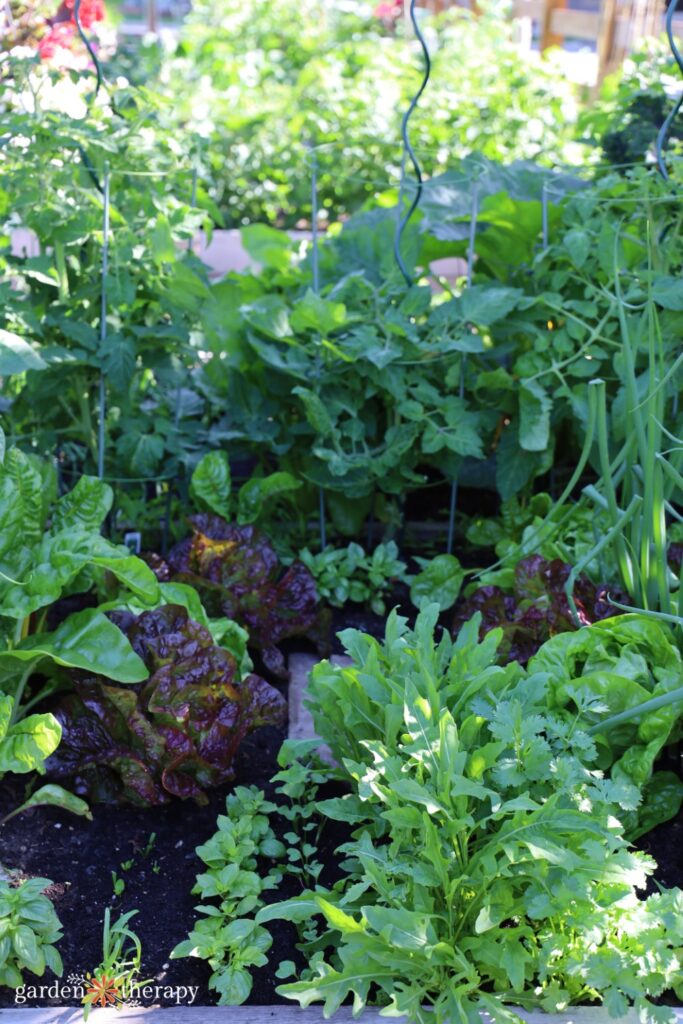
What is Succession Planting?
Succession planting is when you purposefully stagger harvest times. It can apply to everything from perennials to flowers to herbs to vegetables. When planting, consider maturity times so you’re not left with one big harvest and more than you know what to do with.
Let’s use carrots as an example! Succession planting carrots can begin as early as 6 weeks before the last frost by direct sowing your seeds outside. Those early-sown carrots will be ready at the end of spring. But if you plant more carrots every two weeks after that first date, you can harvest carrots every two weeks rather than all at once.
So don’t fill your garden all at once! Sow various times over the course of the vegetable’s growing season.
Succession planting is also referred to as staggered sowing. It’s something that actually has a ton of components when you really dive into it. I’ll keep it simple in this post, but if you want to learn more about the concept of succession planting and how it can apply to different gardens, I encourage you to check out this post.
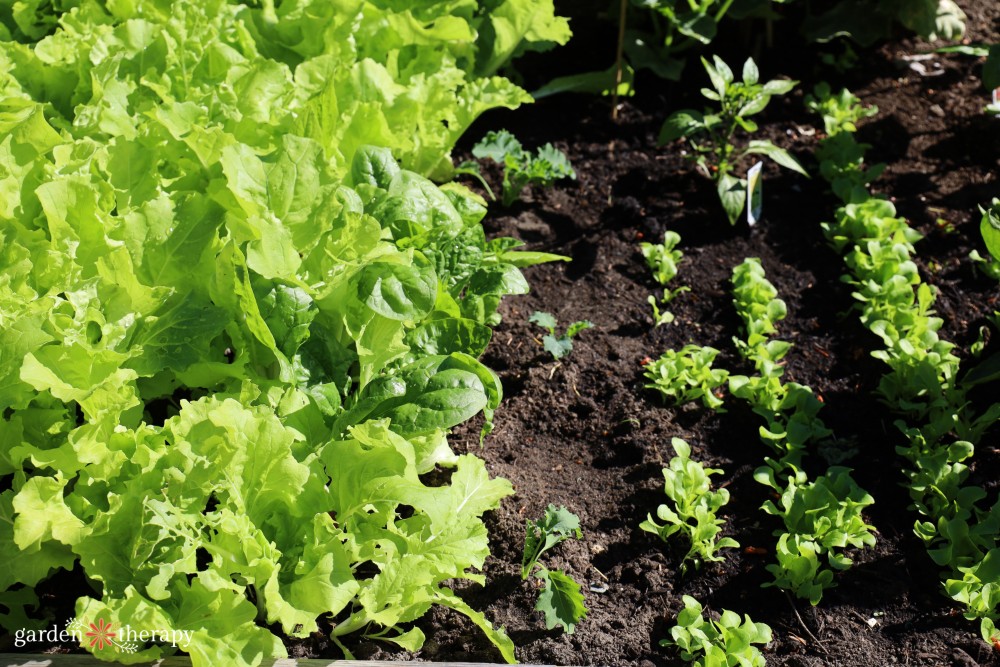
Tips for Succession Planting Vegetables
Before I get into specifics about succession planting certain vegetables, here are some tips to help you with your staggered sowing.
- Plant cool-season vegetables first. Some plants prefer the cool temperatures of spring, such as spinach, kale, or radishes. Harvest those early, then replace them with warm-season vegetables, such as tomatoes, peppers, and eggplants. Introduce a new crop of veggies when the previous crop is finished.
- Start warm-season vegetables inside. Get a head start on the season by starting warm-season vegetables inside while the cool-season vegetables are outside.
- Use frost protection to extend your growing season before the first frost and after the last frost.
- Grow different varieties of the same vegetables. Oftentimes, they have slightly different maturity rates and harvest times.
- Plan your planting times in advance to help you successfully stagger when different plants will mature.
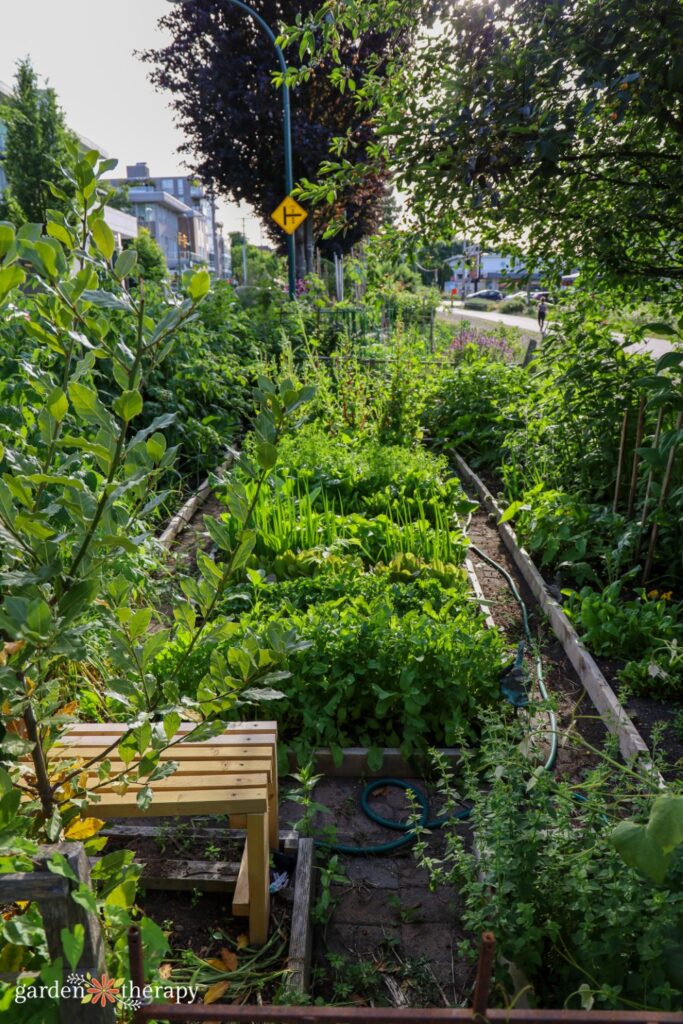
Succession Planting Vegetables
Use the information below to help work out the timing of the staggered sowing. You will need to know your first and last frost dates. It’s also a good idea to realistically know how much space you have and how much you can fit in it. This will help you determine how many plantings you do.
Indoor seed starting is encouraged for most plants to help you get a head start on your plantings.
If planting/transplanting outside BEFORE the last frost date, you will need frost protection. This post has plenty of ideas for frost protection. Planting before the last frost will greatly help to extend your harvest time and aid in succession planting vegetables.
Beans
- Growing season: summer
- Weeks from seed to harvest: 8 (bush bean) or 10 (pole bean)
- Start seeds indoors: na
- Earliest outdoor planting: after the last frost
- Additional plantings: every 2 weeks
- Last planting: 10 weeks before the first frost
Beets
- Growing season: spring, summer, fall
- Weeks from seed to harvest: 8
- Start seeds indoors: na
- Earliest outdoor planting: 3 weeks before the last frost
- Additional plantings: every 3 weeks
- Last planting: 8 weeks before first frost
Broccoli
- Growing season: spring, fall
- Weeks from seed to harvest: 16
- Start seeds indoors: 8 weeks before last frost (recommended)
- Earliest outdoor planting: 5 weeks before the last frost
- Additional plantings: start a second round 4 weeks after the 1st
Carrots
- Growing season: spring, summer, fall, winter (winter with protection)
- Weeks from seed to harvest: 10
- Start seeds indoors: na
- Earliest outdoor planting: 6 weeks before the last frost
- Additional plantings: every 3 weeks
- Last planting: 8 weeks before the first frost
Pro tip: When succession planting carrots, plant them between your other vegetables and plants. Thanks to their thin, narrow growth, they can easily be added to gaps in your bed.
Celery
- Growing season: spring, summer, fall
- Weeks from seed to harvest: 12-14
- Start seeds indoors: 10 weeks before last frost (recommended)
- Earliest outdoor planting: 4 weeks before the last spring frost
- Additional plantings: every 2 weeks until late spring
- Last planting: 12 weeks before first frost
Cucumber
- Growing season: summer
- Weeks from seed to harvest: 9
- Start seeds indoors: na
- Earliest outdoor planting: 1 week after the last spring frost
- Additional plantings: start a second round 12 weeks before the first frost
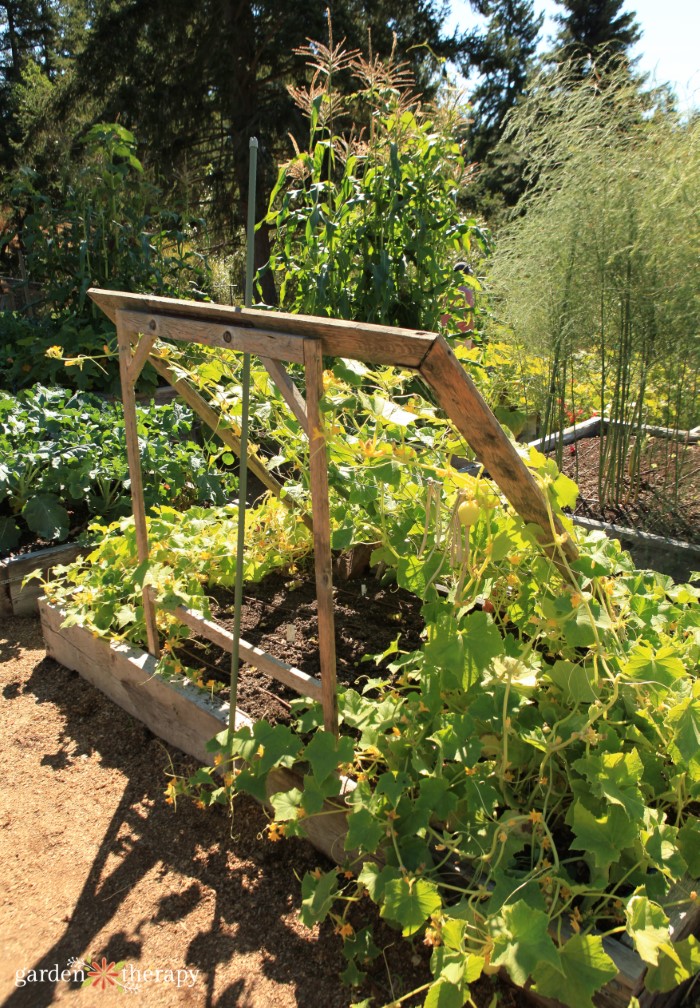
Kale
- Growing season: spring, fall
- Weeks from seed to harvest: 6
- Start seeds indoors: 8 weeks before the last frost
- Earliest outdoor planting: 5 weeks before the last frost
- Additional plantings: mid-summer for fall harvest
- Last planting: 12 weeks before first frost

Lettuce
- Growing season: spring, summer, fall, winter (needs protection from the sun in summer and cold in winter)
- Weeks from seed to harvest: 7
- Start seeds indoors: na
- Earliest outdoor planting: 6 weeks before the last frost
- Additional plantings: every 2 weeks
- Last planting: 4 weeks before first frost
Pro tip: Succession planting lettuce is very easy to do using the cut-and-come-again method. After I harvest a row of my first lettuce, I sprinkle a new set of seeds in its place.

Onions
- Growing season: spring, summer
- Weeks from seed to harvest: 20
- Start seeds indoors: 10 weeks before the last frost
- Earliest outdoor planting: 2 weeks before the last frost
- Additional plantings: mid-summer for fall harvest
- Last planting: up to 6 weeks before the first frost
Peas
- Growing season: spring, fall
- Weeks from seed to harvest: 10
- Start seeds indoors: na
- Earliest outdoor planting: 6 weeks before the last frost
- Additional plantings: mid-summer for fall harvest
- Last planting: 10 weeks before the first frost
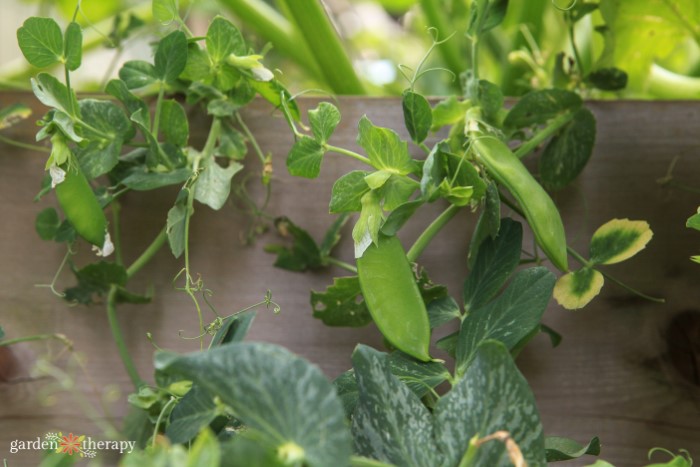
Peppers
- Growing season: summer
- Weeks from seed to harvest: 19
- Start seeds indoors: 10 weeks before the last frost
- Earliest outdoor planting: after the last frost
- Additional plantings: mid-summer
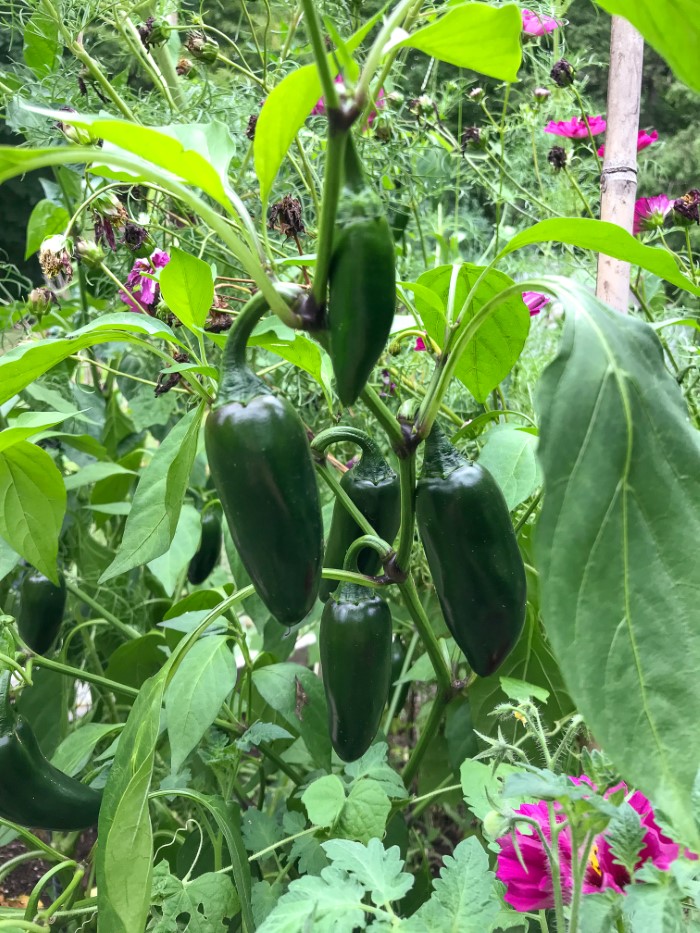
Potatoes
- Growing season: spring, summer, fall
- Weeks from seed to harvest: 12
- Start seeds indoors: na
- Earliest outdoor planting: at last frost
- Additional plantings: late spring
- Last planting: late spring
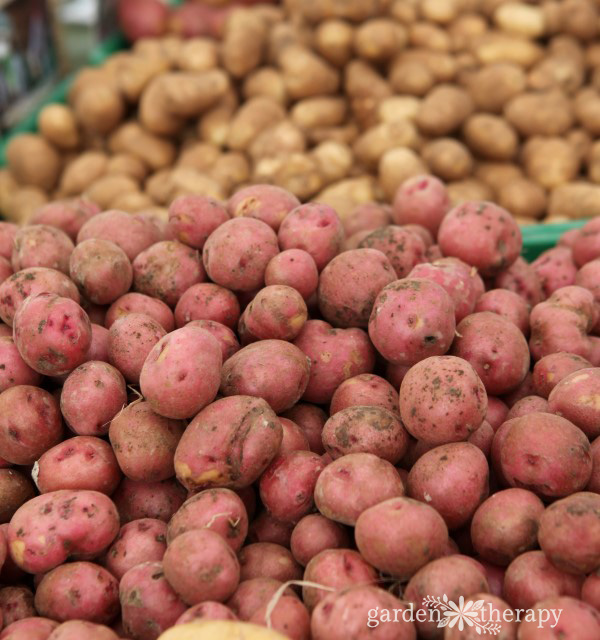
Radishes
- Growing season: spring, summer, fall (requires protection from the sun in summer)
- Weeks from seed to harvest: 4
- Start seeds indoors: na
- Earliest outdoor planting: 3 weeks before the last frost
- Additional plantings: every 2 weeks
- Last planting: 4 weeks before first frost
Spinach
- Growing season: spring, fall, winter (requires winter protection)
- Weeks from seed to harvest: 7
- Start seeds indoors: na
- Earliest outdoor planting: 5 weeks before the last frost
- Additional plantings: every 2 weeks until late spring
- Last planting: 8 weeks before first frost
Squash
- Growing season: summer
- Weeks from seed to harvest: 8 (summer squash) or 12 (winter squash)
- Start seeds indoors: na
- Earliest outdoor planting: 2 weeks after last frost
- Additional plantings: start a second round two weeks after the 1st round
Tomatoes
- Growing season: summer
- Weeks from seed to harvest: 17
- Start seeds indoors: 8 weeks before the last frost
- Earliest outdoor planting: after the last frost
- Additional plantings: start a second succession 4 weeks after 1st round
Pro tip: When succession planting tomatoes, make sure you know whether they are indeterminate or determinate. Succussion planting is especially helpful for determinate tomatoes, since all the tomatoes ripen at once rather than gradually.
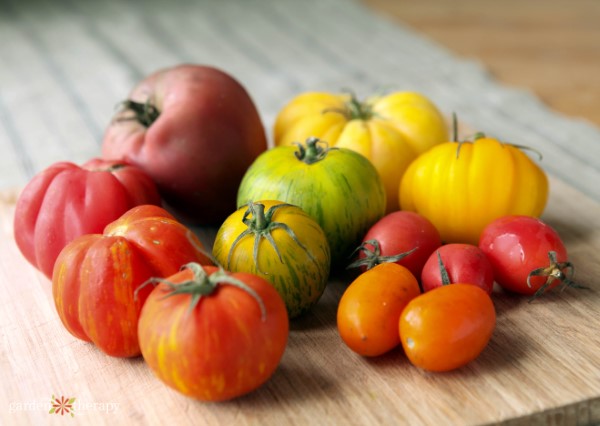
More Tips for Vegetable Gardening
A city girl who learned to garden and it changed everything. Author, artist, Master Gardener. Better living through plants.

